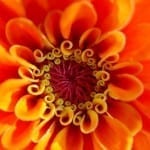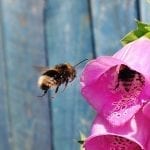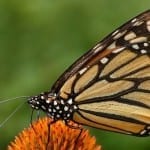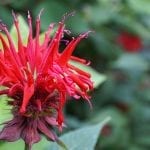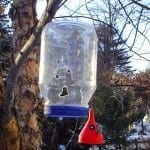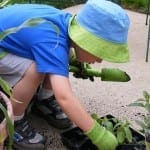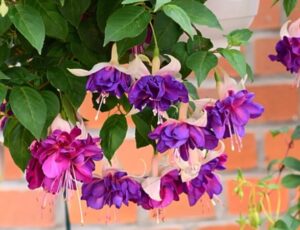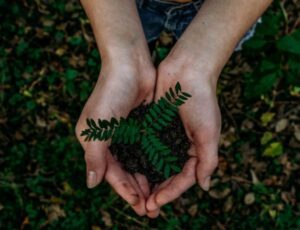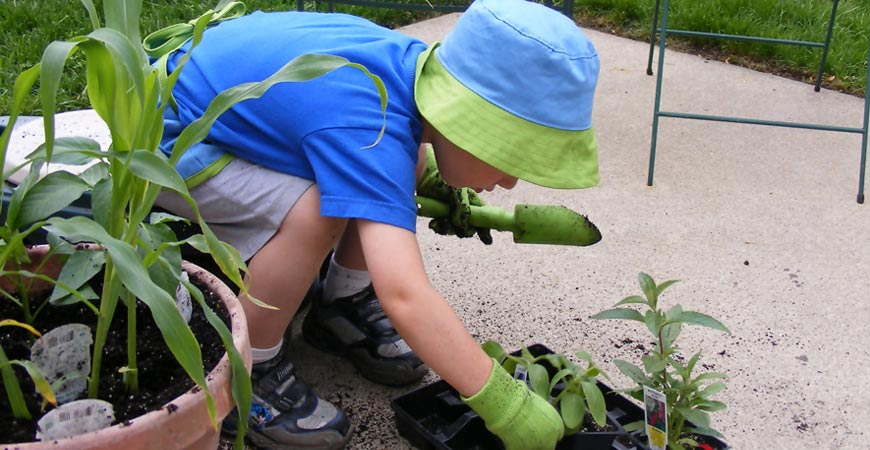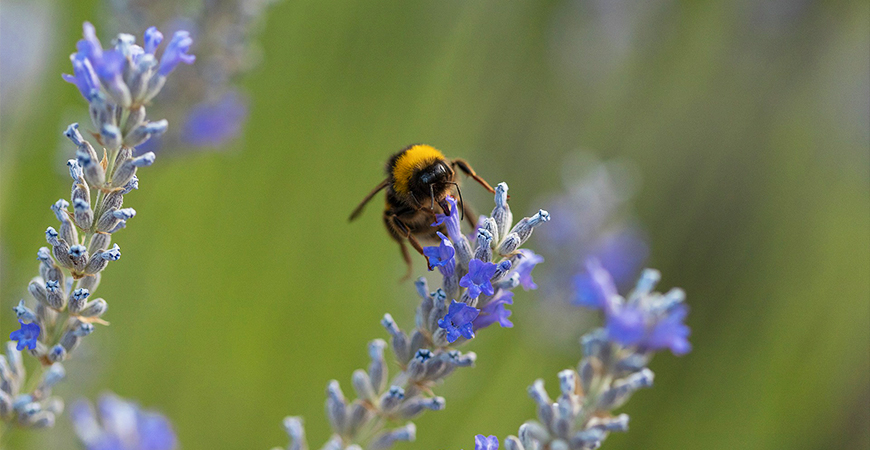
The Best Pollinator-Friendly Plants for Your Garden
A garden that supports beneficial pollinators is good for the ecosystem because they play an important part in plant reproduction. If you’re looking for the best plants to create a beautiful and buzzy pollinator garden, read on!
What are the benefits of adding pollinator-friendly plants to my garden?
The most familiar pollinators are bees, butterflies, and hummingbirds. A few lesser-known pollinators are wasps, moths, beetles, and bats.
Ultimately, all of these different types of pollinators are essential to plant reproduction.
Unfortunately, the loss of habitat and the use of chemical pesticides threatens this vital part of nature’s ecosystem, as we have seen with bees. Another threat these pollinators are faced with is invasive plants invading their natural habitat.
Pollinators rely on specific native plants to survive. So, planting a pollinator garden will help to create a healthy habitat for your busy, buzzy friends, like bees, to enjoy.
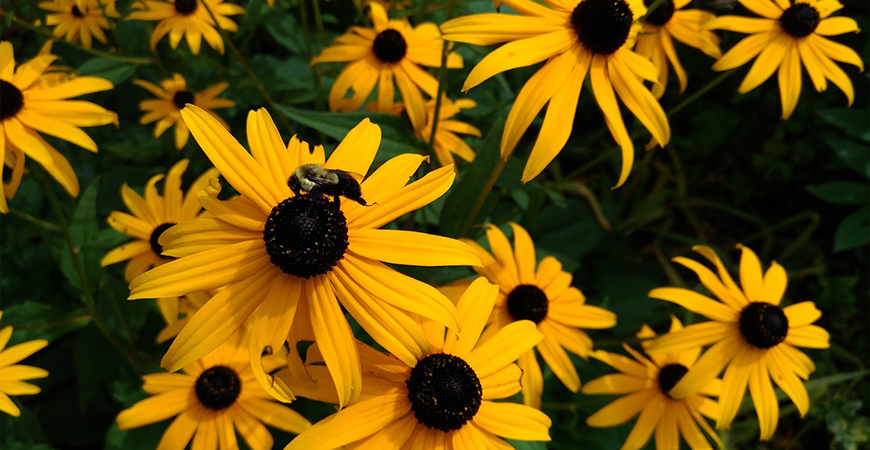
Black-eyed Susan is a popular flower to plant to attract bees.
What pollinator plants attract bees?
Below are a few pollinator plants that attract bees:
Early spring plants: pansies, pussy willow, and snowdrops.
Spring to Summer plants: peony, milkweed, bee balm, lavender, phlox, zinnias, marigolds, and chives.
Fall plants: liatris, mint, sage, nasturtium, black-eyed Susans, borage, oregano, and thyme.
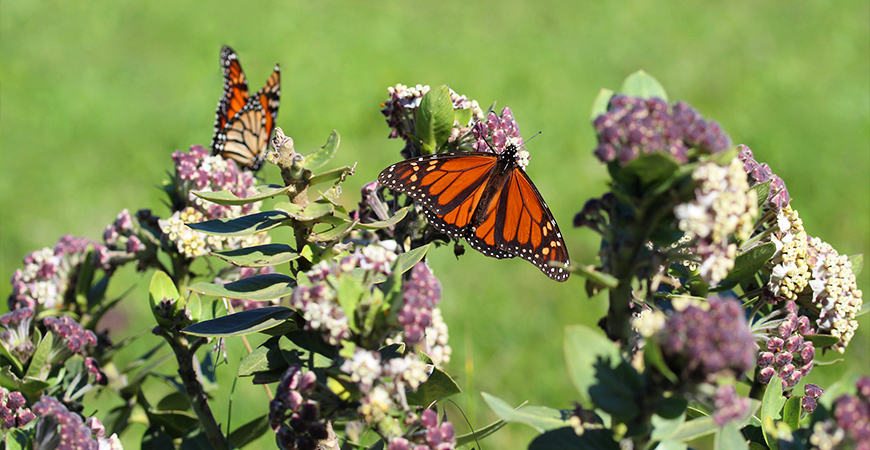
Milkweed is one of the many plants that can be planted to attract butterflies.
What pollinator plants attract butterflies?
Butterflies need two types of plants- host plants and nectar plants. Host plants are where butterflies lay their eggs. On the other hand, nectar plants provide a source of food.
Butterfly host plants include native milkweed, which is popular with monarch butterflies, and parsley preferred by black swallowtails.
Nectar plants include aster, phlox, coneflower, lantana, heliotrope, echinacea, and black-eyed Susan.
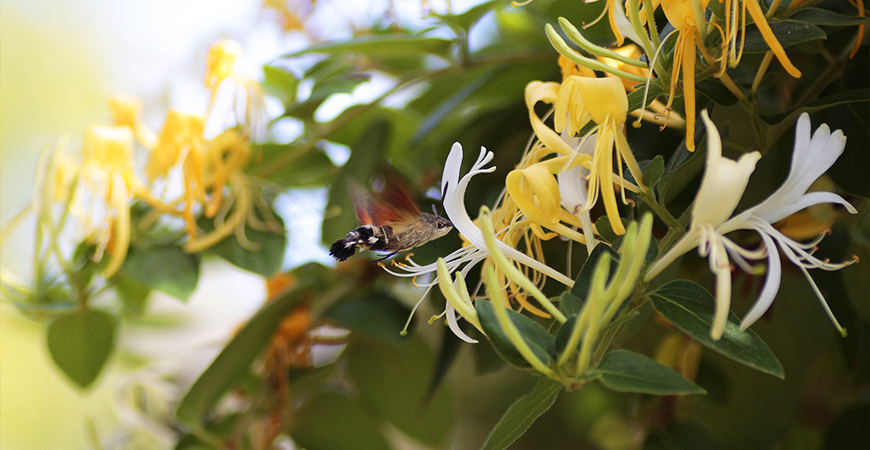
Hummingbirds love honeysuckle plants.
What pollinator plants attract hummingbirds?
Pollinator-friendly blooms for hummingbirds are all about the nectar. Hummingbirds rely on the sugary liquid to fuel their high-speed travels.
Blooming plants that hummingbirds love include trumpet vine, honeysuckle, red cardinal flower, bee balm, salvia, rhododendron, lupine, columbine, and lily.
What are the best plants to attract pollinators?
Here are 10 pollinator-friendly plants for your garden or planter:
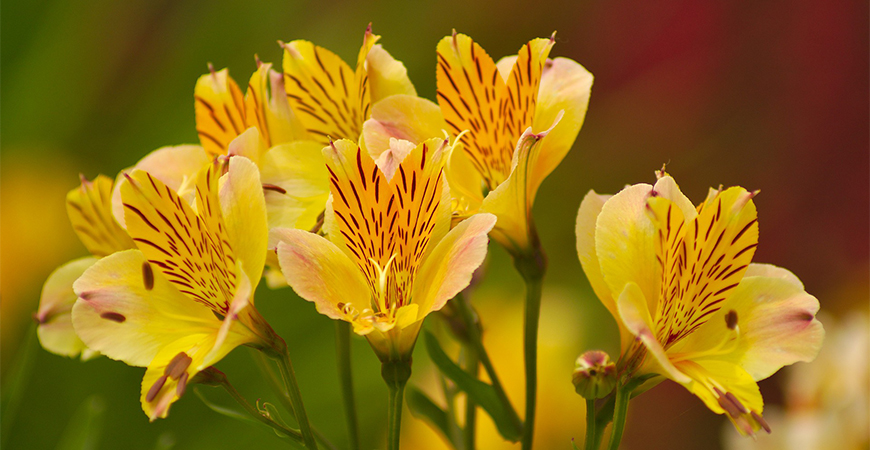
Alstroemerias are great for attracting pollinators and are long-lasting when cut.
Alstroemeria
Another way to identify this flower is by its other name, Peruvian lily. This exotic-looking flower creates a striking presentation with its often freckled or streaked blooms.
This type of flower is not only a great addition to a pollinator garden but makes for a great cut flower option as well. They are a popular option due to their longevity once cut- lasting for more than 2 weeks at a time.
Characteristics of this flower are the height- growing to be one to three feet. Furthermore, alstroemeria blooms grow from tuberous roots.
Blooming from early summer to fall, this showy plant requires little maintenance and makes an excellent border plant. Just make sure to plant them in full or part sun for them to really thrive.
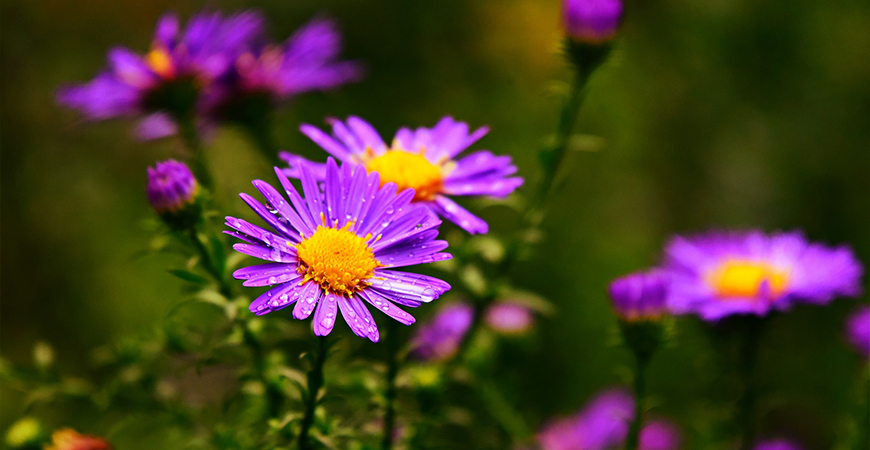
This vibrant, purple flower looks great in the garden and on a dish.
Asters
Asters are not only a favorite of birds and butterflies but a landscaping favorite as well. This type of flower is perfect to grow in rock gardens or as a border flower.
This flower ranges in colors- from white to pink to deep purple. Moreover, asters sport their colorful blooms in late summer and early fall.
Because asters are native to North America, they tend to be long-lived and very easy to grow. They thrive in full sun or partial shade and prefer moist, well-drained soil.
Did you know? Aster is an edible flower that can be used as a garnish in dishes.
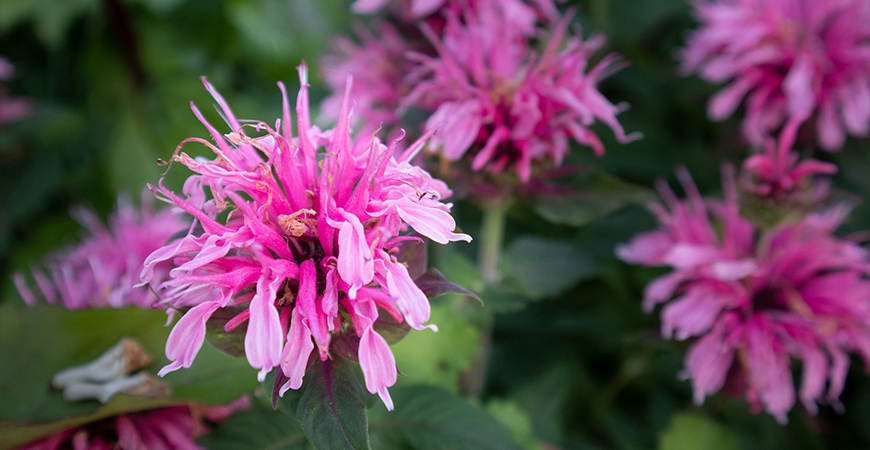
If you’re looking to attract hummingbirds, plant bee balm.
Bee balm
Bee balm brings life to an herb or pollinator garden. Try to plant them near a window of your home to enjoy the antics of hummingbirds, butterflies, and bees.
Uniquely, bee balm plants will multiply in a sunny spot to create a beautiful blanket of color. So, for the best blooms, plant this type of flower in a location that receives full sun.
However, in the southern U.S., this popular pollinator plant prefers afternoon shade because the sun can burn its leaves.
Pinch or prune spent flowers to keep them blooming throughout the season.
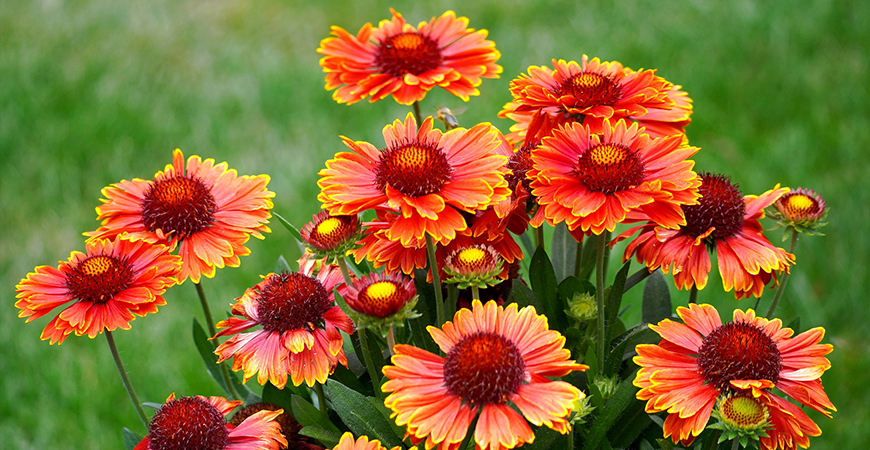
These brightly colored flowers are sure to attract butterflies to your garden.
Blanket flower
Blanket flower, or Gaillardia, is a hardy perennial wildflower that’s often naturalized by the roadside.
This beautiful bloomer produces daisy-like flowers throughout the summer. Keep in mind, that these flowers flourish when planted in full sun and in well-draining soil.
Blanket flower varies in shades of reds, pinks, yellows, and oranges. Additionally, they grow to 1 to 3 feet in height and flowers from early summer until fall.
When it comes to caring for them, deadhead them for continuous blooms. Water them daily when you first plant them in any gardens and then switch to one to two times a week once blooms are visible.
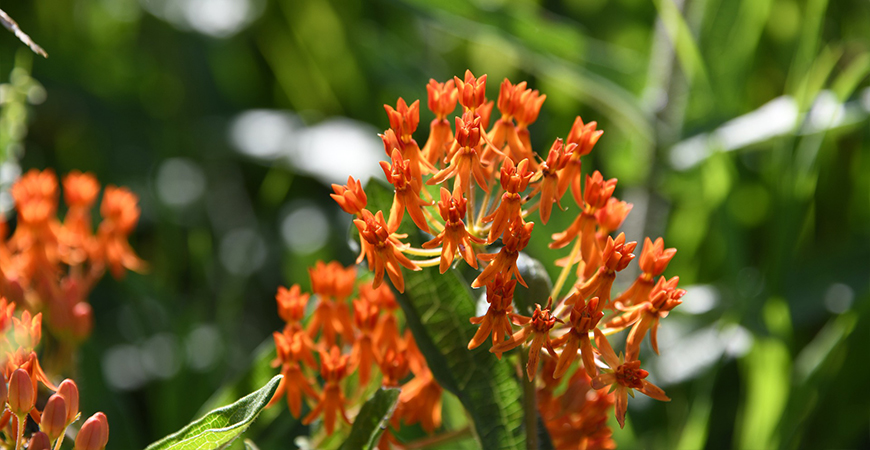
The flower received its name for a reason. Plant butterfly weeds to attract butterflies to your garden.
Butterfly weed
Butterfly weed is a wonderful pollinator plant because it creates neat and tidy blooming mounds that stand out in a perennial garden. This pollinator garden flower option is a pollinator’s favorite- especially butterflies.
This hardy, pollinator-friendly plant grows to approximately 24 to 36 inches in height. If it’s left to self-seed, it will reward you with drifts of colorful blooms next summer and fall.
Butterfly weed is an excellent choice for hot, sunny areas and naturalized gardens because it is drought tolerant. The best zones to plant them are in zones 4 to 10 because butterfly weed prefers neutral to slightly acidic soil.
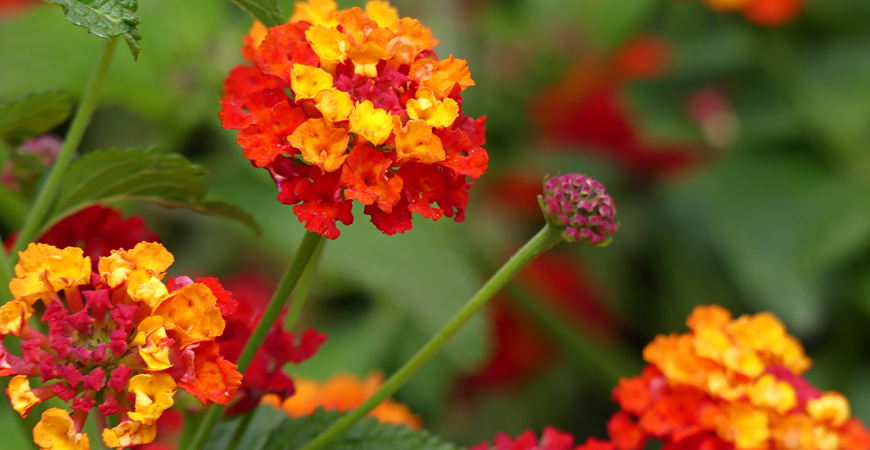
Add a splash of color to gardens situated in coastal regions by planting lantanas.
Lantana
Lantunas are hardy, sun-loving perennials that grow in bushy, flowering mounds that tend to attract butterflies and hummingbirds. They make for the perfect flower to grow in hanging planters.
To identify them, they vary in colors ranging from red, orange, yellow, white, and blue. At maturity, the plant is covered with bright flower clusters, which bloom from late spring to fall.
However, something to keep in mind is that the wrinkled, dark green leaves will give off a pungent scent if torn or bruised. So, be gentle when you’re handling them.
Lantana is a hardy, resilient bloomer that thrives in extreme heat and humidity, which makes them an ideal choice for coastal regions.
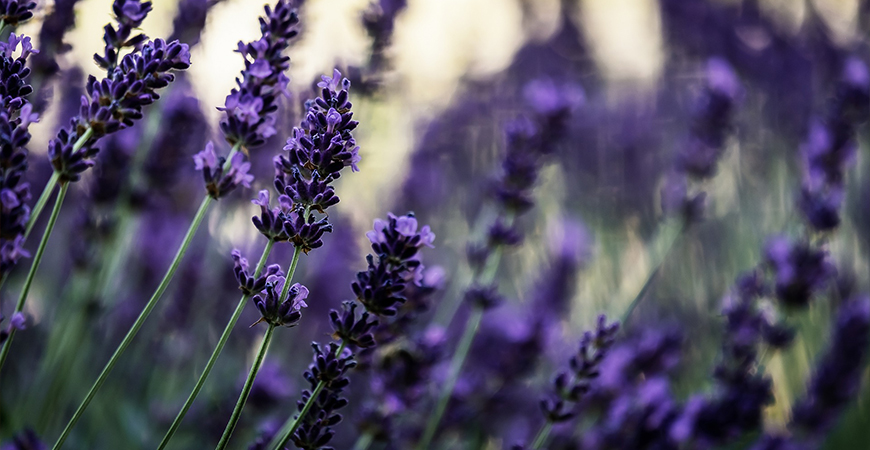
Lavender is a very fragrant flower and garden classic.
Lavender
This fragrant plant is often used as garden edging, as an accent plant, or in a pot. In Mediterranean gardens, you can often see this highly scented flower blooming.
Lavender makes for a great addition to any garden due to its fragrant and look. It can be identified by the purple-hued blooms that rest on its attractive, green foliage.
This pollinator garden flower prefers a site with good drainage and plenty of sunlight. The flower grows best in zones 5 to 9.
Lavender species such as English lavender and lavadin work well in rock gardens. While French lavender and Spanish lavender make great accent plants due to their showy flower heads.
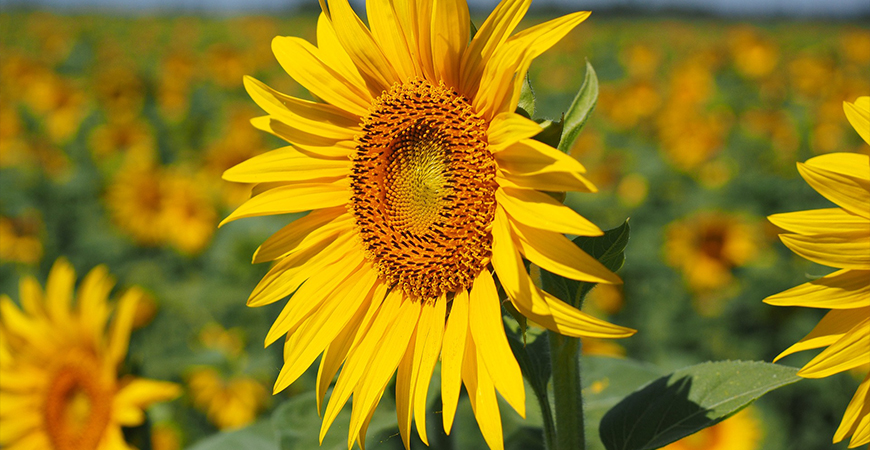
Sunflowers are great additions to add to your garden or outdoor space.
Sunflowers
Native to North America, sunflowers are annuals with large, daisy-like flowers with bright yellow petals. They are heat-tolerant, drought-tolerant, and bold, and are beautiful in a pollinator garden.
When it comes to growing sunflowers, plant them in a full-sun area because they are heliotropic. This means that the flower heads turn during the day to follow the sun- how neat!
They often bloom in mid-summer and will continue to bloom going into fall. When fall comes, the flower’s center ripens, providing edible seeds for birds to enjoy.
Typically, depending on the variety, sunflowers range in height- growing from 1 foot to as tall as 12 feet. Some cultivars can grow them to over 16 feet in height!
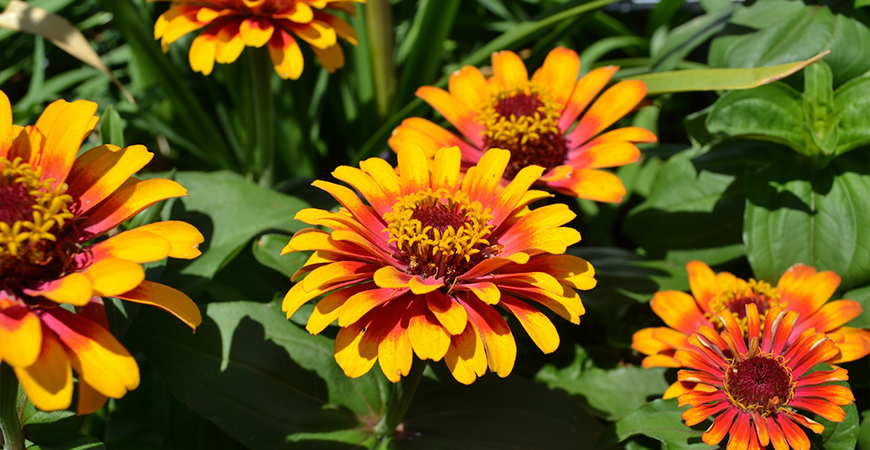
You’re bound to find a zinnia color combination you like with its wide array of hues.
Zinnias
Zinnias are perfect flowers for beginner gardeners because the plant doesn’t require much care. They are also not picky about fertilizer and the gardener doesn’t have to worry about the heat as these flowers thrive in the summer heat.
This pollinator garden flower is a summer-blooming annual that brings brilliant and bold colors to the garden. Zinnias are available in a myriad of colors that range from bi-colored to tri-colored.
When it comes to planting them, plant zinnias in a full sun location. They don’t have a specific harding zone- meaning they can be planted just about anywhere.
Another bonus for planting zinnias is that the seeds are easy to sow. This means you can plant zinnias year after year.
Zinnias continually produce flowers throughout the summer and fall. However, clip faded blooms if they are visible.
Did you know?
Specific bloom colors, such as red, yellow, orange, and purple, attract butterflies. This makes it easier for these pollinators to spot the blooms.
When sowing flowering plants group them by color and type.
Planting a pollinator garden is an easy way to make a difference for the local ecosystem while you enjoy the great outdoors. Be sure to let us know in the comments below which of these 10 pollinator-friendly flowers is your favorite!


